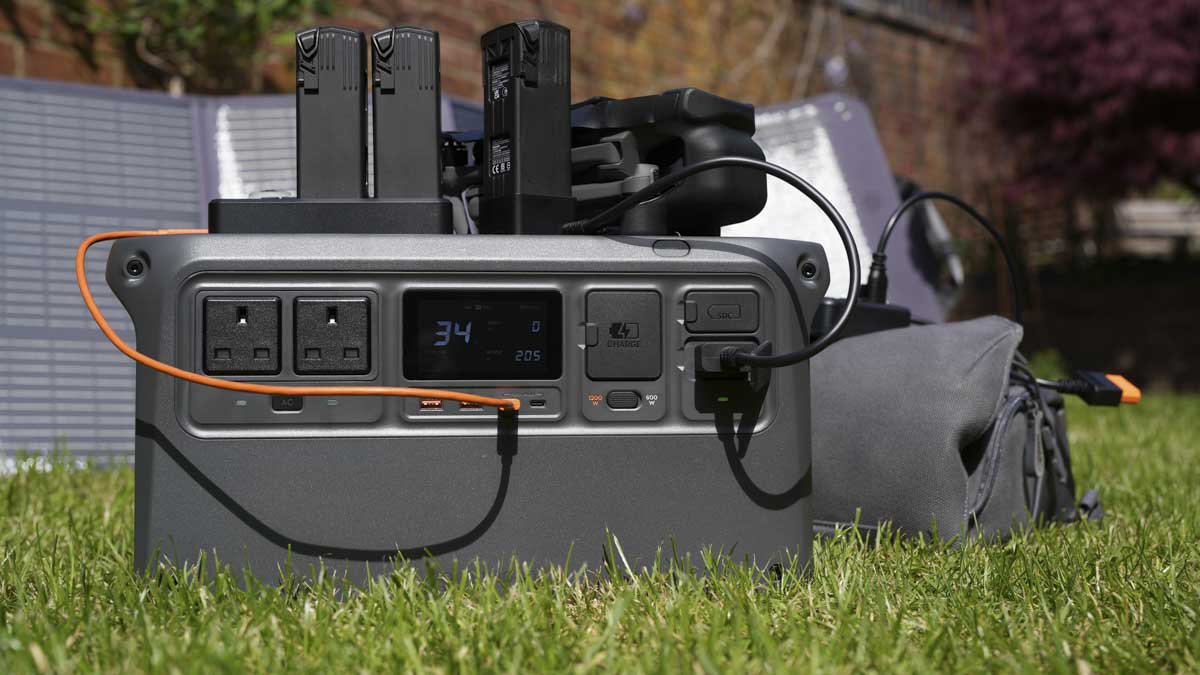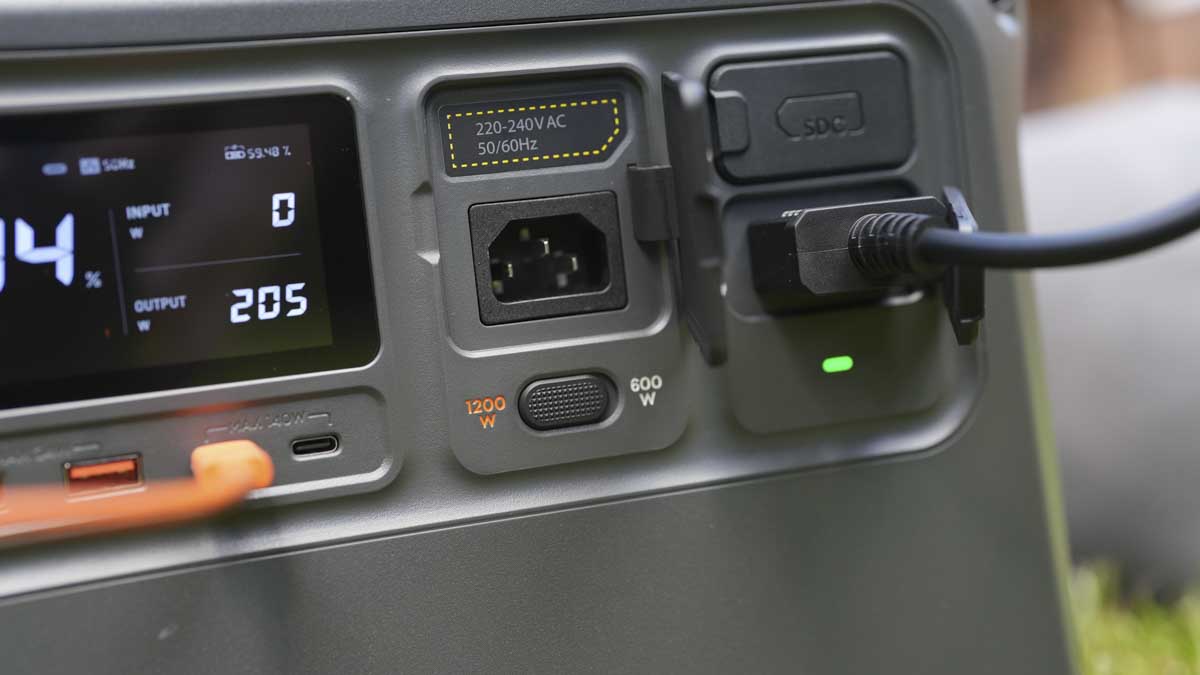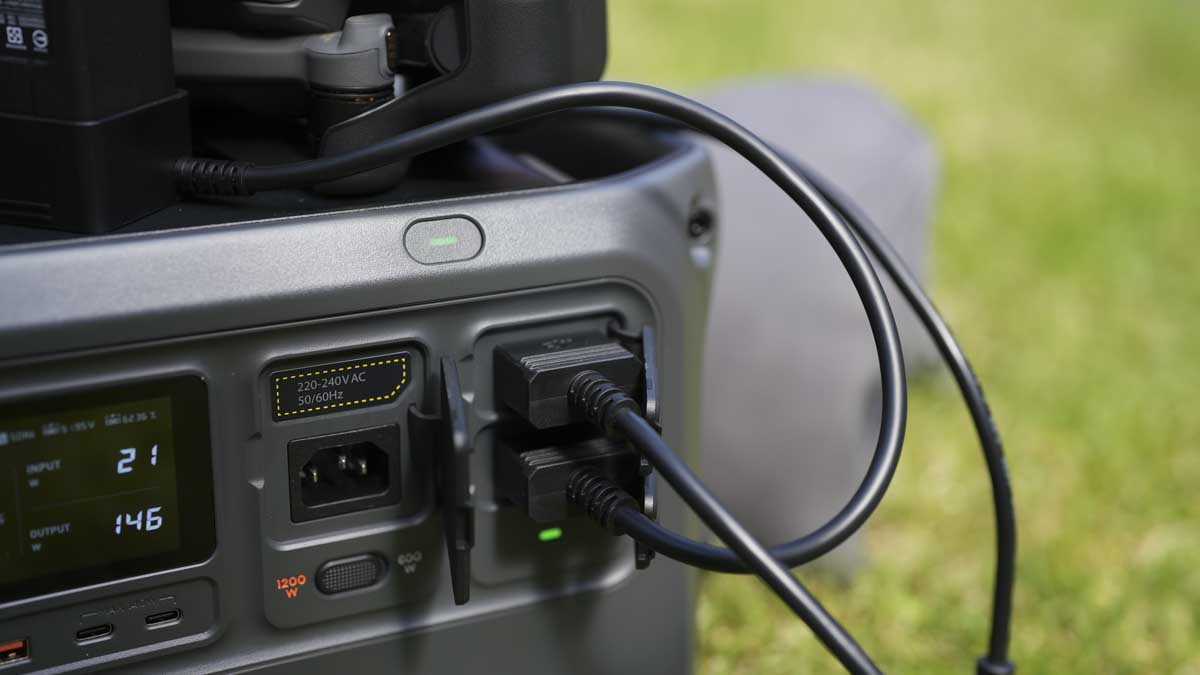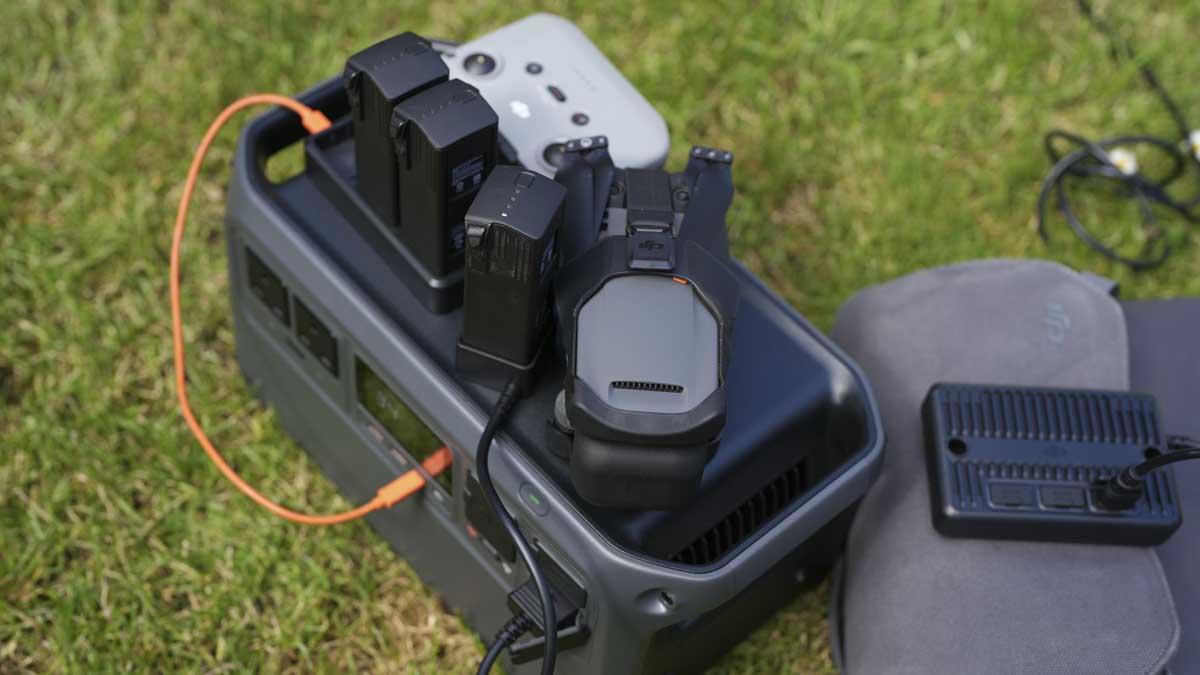Over the last couple of years, I have gone from seeing portable power stations as something handy to an essential piece of kit. In terms of capacity, 1TB is usually the absolute base level for photography, with cameras, lights, and computers drawing down the power at an incredible rate.
As such, there is now a good range of power stations that absolutely hit the mark and provide a decent amount of power, capacity and build quality. So, to stand out in a market currently dominated by Jackery, Eco-Flow, UGREEN, and Bluetti, DJI has to do something a little different.
When it comes to those base functions that the other companies do very well—fast charge capability, AC up to 2000W, DC, solar input—the Power 1000 meets all these demands. To test these out one by one, a full charge through mains took just under 70 minutes, and a full charge through one 400W solar panel took five hours (we are in the UK spring, but yesterday was uncharacteristically sunny). MacBook Pro was supplied with enough juice, around 110W through the USB Type-C, and the iPhone took a little juice as well to top up the charge. To test the AC ports, I plugged in a series of standard chargers for Sony, Canon, and ProFoto; they all worked and charged at a standard rate. I then needed a coffee, so I plugged in the 2000W kettle, and it drew 1850W and boiled as if connected to the mains—all standard boxes ticked.

So, what else makes the DJI Power 1000 better or more appealing than the other very decent portable power stations out there?
I decided to focus on three main aspects of this test: portability, fast charging of my Mavic 3, and dual 600W/1200W charging.
The first part of the test was easy as I had to get the power station to the van to start the test; here, the large handles and the 13kg weight are actually relatively well balanced, so while heavy, it isn’t too bad, and the whole thing is easy enough to move and manoeuvre. Again, as I mentioned in the previous section, my only real complaint is that I can’t use it to set up the gimbal or use it as a take-off platform for the drone; it’s just a tad too slim.
The next test is to see how quickly it charges the DJI Mavic 3 batteries; now, this requires an adapter to plug directly into the unit. Once inserted, the battery then starts charging nice and quickly—while the first battery charges, I leave the other two charging normally, and then after 20 minutes, swap the batteries around, eventually having a set of three fully charged batteries in around an hour, not at all bad. However, I now doubt that I’d fully run them all down.
Finally, it was to test the 600W and 1200W options; using either option means that you get a battery that is 100% charged, at least with the age of the battery being new; it will deplete over time. Switching to 1200W, the battery charges in 70 minutes, with the charge rate slowing as it reaches full capacity. On the next charge, at 600W, the battery took over three hours to charge. The reason behind this difference is twofold: firstly, the slower charge is more gentle on the cells in the power station and will mean that it lasts longer; secondly, it’s quieter, so if charged at a fast rate, the fans kick in and are unmistakable!

At the end of the test, I was impressed by the design and durability of the DJI power station—those small added extras, such as the dual solar inputs, do make a difference. However, I would have liked to have had a standard solar plug so that I didn’t need the adapter or two if using two 400W panels.
The big selling point here is the speed charging for drones and accessories, and it is extremely useful. If you use and fly a DJI kit, then the DJI Power 1000 just makes sense. If you use other equipment, then one of the other slightly larger capacity options out there might be a better option.









